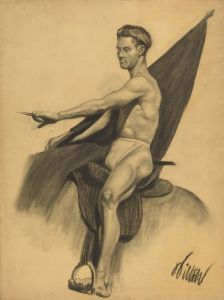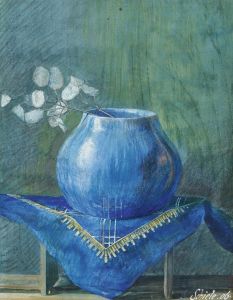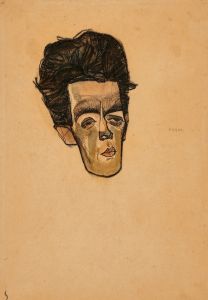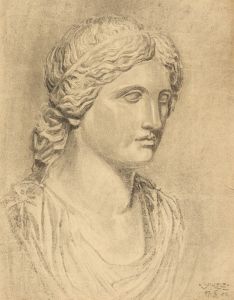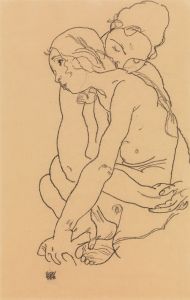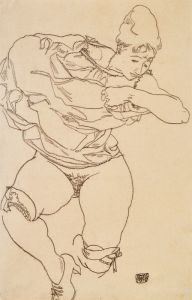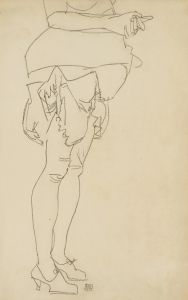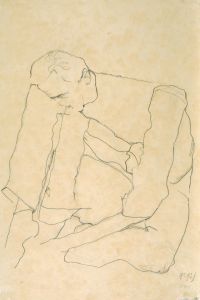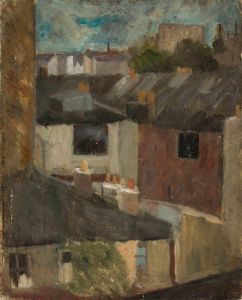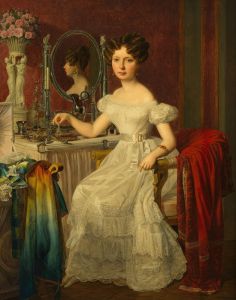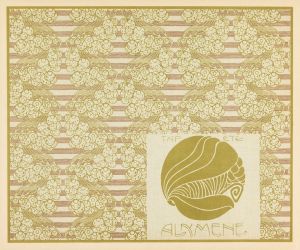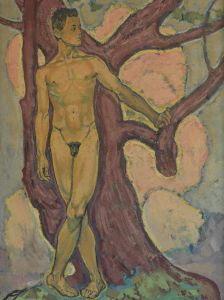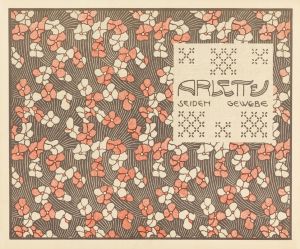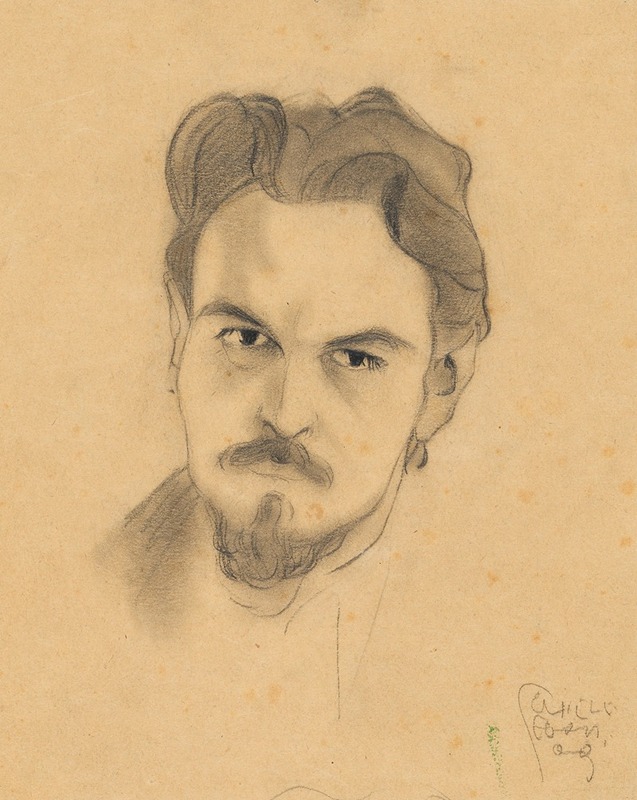
Porträtstudie Anton Peschka
A hand-painted replica of Egon Schiele’s masterpiece Porträtstudie Anton Peschka, meticulously crafted by professional artists to capture the true essence of the original. Each piece is created with museum-quality canvas and rare mineral pigments, carefully painted by experienced artists with delicate brushstrokes and rich, layered colors to perfectly recreate the texture of the original artwork. Unlike machine-printed reproductions, this hand-painted version brings the painting to life, infused with the artist’s emotions and skill in every stroke. Whether for personal collection or home decoration, it instantly elevates the artistic atmosphere of any space.
Egon Schiele, an Austrian painter known for his distinctive and often provocative style, created the work titled "Porträtstudie Anton Peschka" in 1909. This piece is a portrait study of Anton Peschka, who was not only a fellow artist but also Schiele's brother-in-law. Schiele's work is characterized by its raw emotional intensity and unique approach to form and color, and this portrait study is no exception.
Anton Peschka was an Austrian painter himself, and his connection to Schiele was both personal and professional. Peschka married Schiele's sister, Gertrude, in 1914, further solidifying their familial bond. The relationship between the two artists was one of mutual respect and influence, as they were both part of the vibrant Viennese art scene in the early 20th century. This environment was marked by a departure from traditional artistic norms and an embrace of more expressive and avant-garde techniques.
"Porträtstudie Anton Peschka" exemplifies Schiele's approach to portraiture, which often involved capturing the psychological depth and complexity of his subjects. Schiele's portraits are renowned for their intense scrutiny and the way they convey the inner life of the sitter. In this study, Schiele employs his characteristic line work and a keen eye for detail to render Peschka's likeness. The portrait is notable for its emphasis on the subject's facial features, with particular attention given to the eyes, which are often a focal point in Schiele's work.
The year 1909 was a significant period in Schiele's artistic development. Having been a student of Gustav Klimt, Schiele was beginning to forge his own path and develop a style that was distinct from his mentor's. While Klimt's influence is evident in Schiele's early works, by 1909, Schiele was increasingly moving towards a more personal and expressive form of art. This shift is evident in "Porträtstudie Anton Peschka," where Schiele's use of line and form begins to take on the more angular and exaggerated qualities that would become hallmarks of his later work.
Schiele's portraits often explore themes of identity, vulnerability, and the human condition, and this study is no different. Through his depiction of Peschka, Schiele not only captures the physical likeness of his subject but also delves into the emotional and psychological aspects of his character. This ability to convey complex emotions and psychological states is one of the reasons Schiele's work continues to resonate with audiences today.
The portrait study of Anton Peschka is a testament to Schiele's skill as a draughtsman and his ability to convey depth and intensity through his art. It reflects both his personal connection to the subject and his broader artistic goals. As with many of Schiele's works, this piece invites viewers to look beyond the surface and consider the deeper emotional and psychological narratives at play.
Egon Schiele's contribution to the world of art is significant, and works like "Porträtstudie Anton Peschka" offer insight into his development as an artist and his enduring impact on the art world. His innovative approach to portraiture and his exploration of the human psyche continue to influence artists and captivate audiences around the globe.





